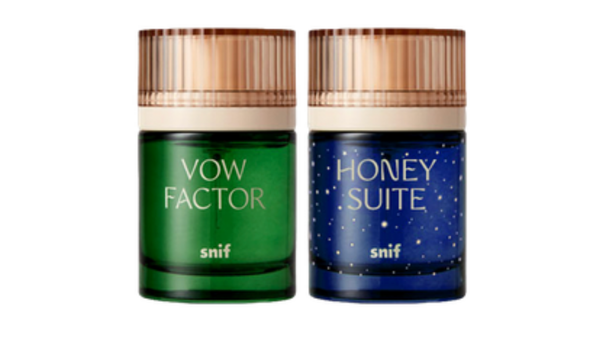Oxybenzone: What You Need to Know About This Controversial Sunscreen Ingredient
Oxybenzone, a common sunscreen ingredient, faces scrutiny for health and environmental risks, prompting shifts toward safer alternatives.

Oxybenzone—also known as benzophenone-3—is a widely used chemical in sunscreens and personal care products, prized for its ability to absorb harmful ultraviolet (UV) rays and protect skin from sun damage[1][3][6]. However, growing concerns about its health and environmental impacts have led to increased scrutiny, regulatory bans, and a shift in consumer preferences.
What Is Oxybenzone?
- Oxybenzone is an organic compound, first synthesized in 1906, that appears as pale-yellow or colorless crystals, readily soluble in most organic solvents[1][2][3].
- It is a derivative of benzophenone and is used in sunscreen, cosmetics, plastics, furniture finishes, nail polish, and other products to absorb UV-A and UV-B rays, preventing both skin damage and product degradation[1][2][3][7].
How Does Oxybenzone Work in Sunscreens?
- Oxybenzone acts as a UV filter, absorbing light in both the UV-B (280–315 nm) and short-wavelength UV-A (315–355 nm) ranges, with absorption peaks at 288 and 350 nm[4][3].
- Its effectiveness as a broad-spectrum sunscreen ingredient led to FDA approval in the 1980s, allowing concentrations up to 6% in U.S. products[4][6].
Health Concerns and Human Exposure
- Oxybenzone is absorbed through the skin and has been detected in more than 96% of the U.S. population, with levels peaking in summer months[9][8].
- Studies suggest oxybenzone may act as an endocrine disruptor, mimicking estrogen and potentially interfering with hormone function[2][9].
- Health risks linked to oxybenzone exposure include:
- Allergic skin reactions and photocontact dermatitis (it was named “Allergen of the Year” by the American Contact Dermatitis Society in 2014)[9].
- Possible associations with early puberty, reduced sperm count, fertility issues, and hormone-related cancers[9].
- The International Agency for Research on Cancer (IARC) classifies benzophenone (the parent compound) as a possible human carcinogen based on animal studies[2].
- The CDC has found oxybenzone in the urine of approximately 97% of people tested, highlighting its widespread presence in the environment and in humans[8].
Environmental Impact
- Oxybenzone has been shown to harm coral reefs, contributing to coral bleaching and mortality, and is toxic to fish and other aquatic life[4][8].
- It can persist in waterways, accumulate in fish, and resist removal by wastewater treatment plants, raising concerns about a closed loop of contamination[8].
- Due to these risks, several regions—including Hawaii, Palau, and Thailand—have banned sunscreens containing oxybenzone to protect marine ecosystems[3][4].
Industry Response and Alternatives
- The percentage of sunscreen products in the U.S. containing oxybenzone dropped from 60% in 2019 to just 13% in 2023, as brands respond to consumer concerns and regulatory changes[3].
- Many companies now market their sunscreens as “oxybenzone-free,” opting for alternatives like micronized zinc oxide and titanium dioxide, which are considered safer for both humans and the environment[8].
- Other chemical filters, such as octinoxate, avobenzone, and homosalate, are also used, but each comes with its own safety profile[6].
Key Takeaways
- Oxybenzone is an effective UV filter but is now controversial due to its potential health and environmental risks.
- It is being phased out in many products and regions in favor of safer alternatives.
- Consumers concerned about oxybenzone can look for “oxybenzone-free” sunscreens and consider mineral-based options for sun protection[3][8][9].
Oxybenzone’s legacy as a sunscreen ingredient is under review as new research highlights its risks. While it remains an effective UV blocker, the shift toward safer, more environmentally friendly alternatives is reshaping the sunscreen industry—and empowering consumers to make more informed choices about sun protection.
Sources:
[1] Oxybenzone: Uses, Interactions, Mechanism of Action - DrugBank https://go.drugbank.com/drugs/DB01428
[2] Oxybenzone | C14H12O3 | CID 4632 - PubChem https://pubchem.ncbi.nlm.nih.gov/compound/Oxybenzone
[3] Oxybenzone - Wikipedia https://en.wikipedia.org/wiki/Oxybenzone
[4] Oxybenzone - American Chemical Society https://www.acs.org/molecule-of-the-week/archive/o/oxybenzone.html
[5] What is Oxybenzone? | Black Girl Sunscreen https://blackgirlsunscreen.com/what-is-oxybenzone-why-is-the-industry-moving-away-from-it/
[6] What is Oxybenzone? (And Why We'll Never Put It In Your Sunscreen). https://allgoodbodycare.com/blogs/news/what-is-oxybenzone-and-why-we-ll-never-put-it-in-your-sunscreen
[7] Oxybenzone | Inside Our Products – L'Oréal - L'Oreal https://inside-our-products.loreal.com/ingredients/oxybenzone
[8] Dermatological and environmental toxicological impact of the sunscreen ingredient oxybenzone/benzophenone-3 - PubMed https://pubmed.ncbi.nlm.nih.gov/29086472/
[9] What Is Oxybenzone and Why Is it in Sunscreen? https://goddessgarden.com/what-is-oxybenzone-and-why-is-it-in-sunscreen/






